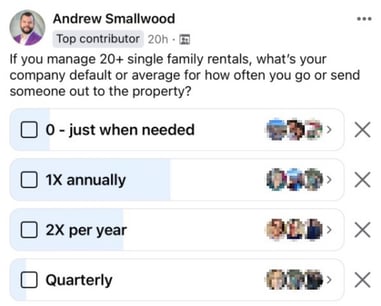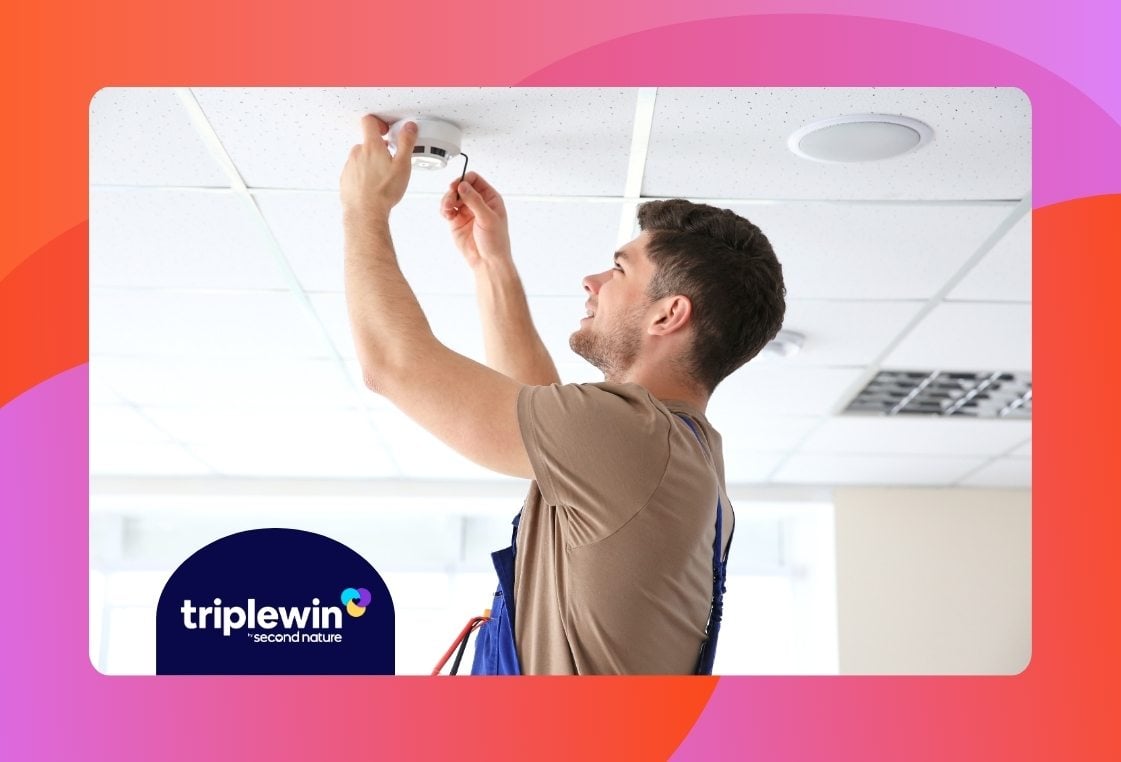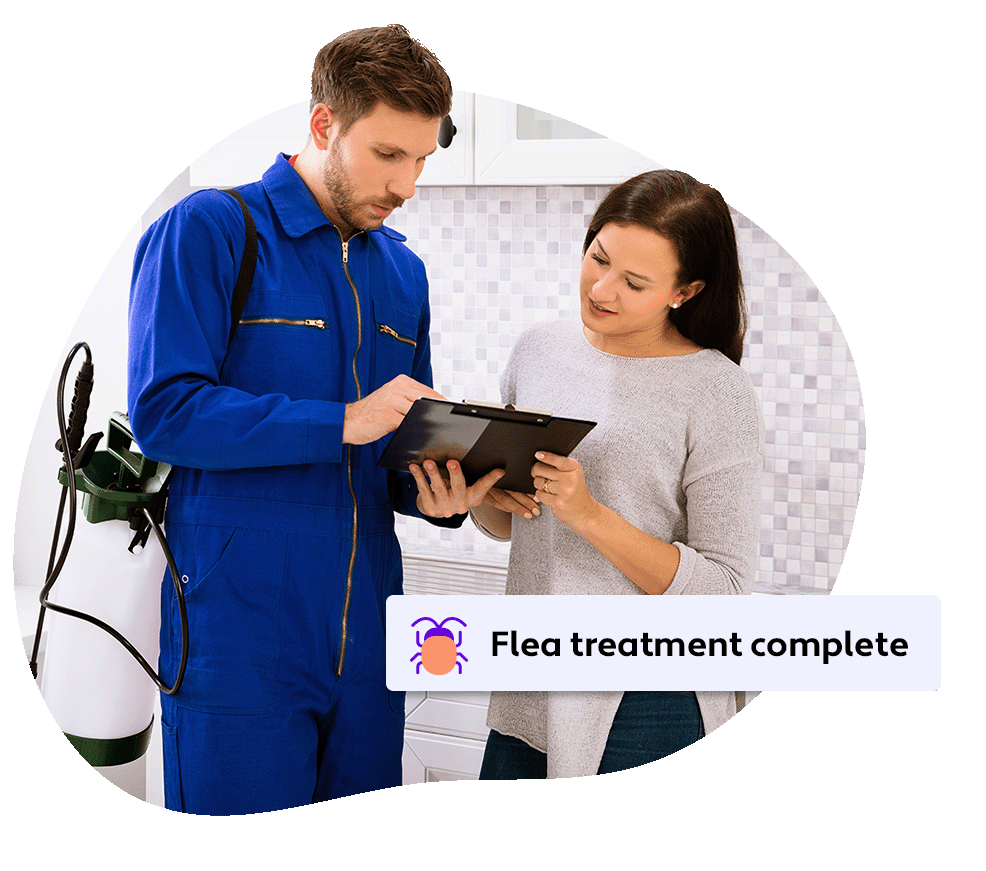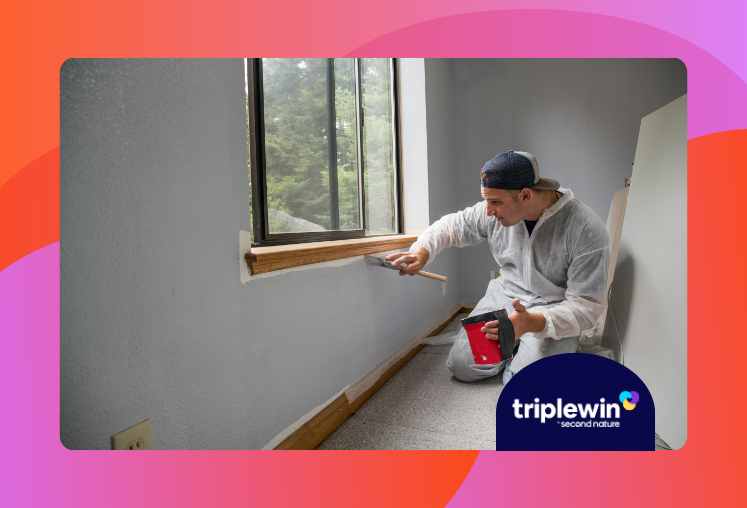What we'll cover
What is preventive maintenance?
What is a preventive maintenance inspection – and who conducts it?
What to include in a preventive maintenance checklist
Sample preventive maintenance checklist for property management companies
The importance of preventive maintenance
Best tools to support preventive maintenance
FAQs
Minimize your preventative maintenance obligations with Second Nature
Good property managers respond to maintenance issues quickly, but great property managers work to prevent issues from arising in the first place. You anticipate issues, plan for problems, and execute solutions. One key part of prevention is developing a property management preventive maintenance checklist.
For multifamily property managers, a regular preventive maintenance check is standard... and easy. Units are often all contained to one apartment building or community, and it’s quick enough to do a walkthrough and ensure that everything is as it should be.
For single-family or scattered-site property managers, it gets a lot more complicated. Quick walkthroughs more than once or twice a year are impractical and expensive. In fact, one of the best ways to approach prevention is to help equip residents to take preventive measures themselves.
Here at Second Nature, we're constantly asking ourselves, “How do we make it easy for residents to handle preventive care of the property?” In this article, we’ll explore both approaches to preventive maintenance: doing inspections as a property manager, or finding solutions where residents support the process.
Let’s dive in.
What is preventive maintenance?
Preventive maintenance is a proactive approach to keeping a property in good condition with the purpose of preventing unexpected failures and maximizing longevity.
This type of maintenance encompasses a broad range of activities, from routine inspections to air filter delivery services that keep HVAC systems running smoothly.
By implementing preventive maintenance tactics, property managers aim to prolong the lifespan of property components, maintain property value, and provide a safe, functional, and appealing living environment for residents.
What is a preventive maintenance inspection, and who conducts it?
A preventive maintenance inspection is a regularly scheduled, systematic evaluation of a property designed to identify and rectify any emerging issues before they escalate into serious problems.
In other words, a preventive maintenance inspection is like a health check-up for a property. A well-documented inspection also provides a record of maintenance that can be valuable for insurance claims, move-outs, and more.
Generally, single family property managers find themselves in three different camps when it comes to property inspections:
- Those who visit sites only when an issue arises.
- Those who conduct scheduled annual preventive inspections, whether there are issues or not.
- Those who conduct biannual or seasonal preventive inspections, whether there are issues or not.
In fact, we conducted a casual Facebook poll to see what single-family property managers said about the frequency of their property inspections. Most PMs who responded said they conduct an annual inspection. A smaller amount said they conduct two inspections per year, and another group said they do it only when needed. A very small amount of property managers polled said they conduct quarterly inspections.

But there’s also a fourth option: partnering with a third-party vendor to help manage prevention. There's a lot that residents can do themselves to prevent larger issues from ever developing, but they need a little bit of support to get started.
For example, if a resident is changing their air filter on time, the property manager is going to get fewer HVAC tickets, and the HVAC system is going to last longer. If you have a reliable way to provide air filters to residents exactly when they're needed, residents can stay on top of their filter changes.
P.S: Want to see more insights and tips, and participate in future polls?
What to include in a preventive maintenance checklist
Let’s say your company prioritizes regular inspections. Crafting a preventive maintenance checklist for property management is all about anticipating needs and averting potential issues before they arise.
Every property is different, so building your checklist begins with a thorough assessment of the building's unique features and vulnerabilities. By understanding the life cycle of various components of a property across the seasons—from HVAC systems to appliances—you can prioritize tasks and schedule maintenance in a way that minimizes wear and tear.
Your checklist will likely include the following categories:
- Structural maintenance
- Electrical systems
- Plumbing & water systems
- HVAC systems (Heating, Ventilation, and Air Conditioning)
- Appliances (if provided)
- Lawn & outdoor areas
- Gutters, downspouts, and drainage
- Pest control
- Safety & security systems
- Interior checks
- Miscellaneous (Garage, waste disposal, etc.)
Sample preventive maintenance checklist for property management companies
With input from OnSightPROS, we’ve built a preventive maintenance checklist template for single-family rental property management companies. Feel free to use this template as-is or tweak it to fit your particular properties!
If you want a downloadable, in-depth template for all types of rental inspections, download it here.
Structural maintenance
- Roofing: Inspect for leaks, damaged tiles, or shingles. Make sure gutters and downspouts are clear of blockages or debris.
- Foundation: Check for cracks, water damage, or shifting.
- Walls and ceilings: Look for cracks, dampness, and signs of mold.
Electrical systems
- Safety checks: Ensure that outlets, switches, and wiring are in good condition.
- Lighting: Regularly test all indoor and outdoor lighting fixtures.
- Inspect circuit breakers and panels.
Plumbing & water systems
- Drains and pipes: Check for leaks, blockages, or buildup.
- Water heater: Test hot water temperature and pressure relief valves and inspect for signs of wear.
- Faucets and fixtures: Ensure proper flow and check for leaks or dripping.
Heating, Ventilation, and Air Conditioning (HVAC)
- Filters: Ensure they are up to date. With Second Nature’s Air Filter Delivery, you’ll have the date stamped right on the filter itself.
- Ductwork: Check for mold or leaks.
- Coil fins: Make sure air conditioner fins are clean and not damaged.
- Seasonal checks: Ensure the heating system is ready for winter and cooling for summer.
- Drain pans: Make sure any drain pans and overflow drains are clear of obstruction. If your system has an emergency overflow shutoff, test to make sure it's working correctly.
Appliances (if provided)
- Oven, range, microwave: Check for cleanliness and ensure they are working efficiently. Make sure that gas burners light quickly and safely.
- Refrigerator: Check coils for cleanliness and inspect seals.
- Washer and dryer: Inspect hoses and ensure the resident is keeping lint and drainage clean. If the washer has a drain pan, make sure it's not damaged and that the drain is clear.
Lawn & outdoor areas
- Landscaping: Ensure that the landscaping is tidy and up to HOA standards, if applicable.
- Paths and driveways: Check for cracks or tripping hazards.
- Pools: Ensure safety measures are in place and gate latches operate correctly.
- Fences: Check for holes in fences or damaged gates, especially if the property is marketed as having an enclosed yard.
- Retaining walls: Check for damage that could compromise the structural integrity of any retaining walls on the property.
Pest control
- Look for chew marks, droppings, and any other signs of pests.
-
With Second Nature’s On-Demand Pest Control, residents can call a professional at the first sign of any issues. We handle it for you, typically with no cost at point of service.
Safety & security systems
- Smoke and carbon monoxide detectors: Ensure they are installed properly, including proper hardwiring, if required. Check batteries, backup batteries, and expiration dates.
- Fire extinguishers: Check expiration dates and ensure they're easily accessible.
- Emergency exits and paths: Ensure they're clear and well-marked, and that any exterior structures like stairs or fire escapes are in good condition.
- Home security systems: If the property includes a security system, ensure that window and door sensors are in working order.
Interior checks
- Floors: Look for damaged tiles, caulk problems, cracked grout, carpet wear, or wood floor issues.
- Windows and doors: Ensure they open and close smoothly, and check seals. Check window screens for holes.
Miscellaneous
- Garage and parking areas: Check for proper lighting, security, and cleanliness.
- Waste disposal: Ensure trash bins are clean and in good condition.
The importance of preventive maintenance
Preventative maintenance may seem like a hassle, but it can save significant money down the road. Even something as simple as getting air filters delivered on time can reduce HVAC costs by hundreds of dollars annually. Preventive maintenance isn’t just about keeping the property in good shape—it's a strategic approach that yields all kinds of benefits.
By prioritizing prevention, you can:
- Minimize costly repairs: Regular maintenance can prevent small maintenance issues from escalating into expensive emergencies.
- Extend asset longevity: Helping residents proactively care for components like HVAC systems extends their lifespan, saving money in the long run.
- Enhance resident satisfaction: Supporting a resident in maintaining their property means fewer complaints and issues, leading to higher retention rates.
- Ensure safety: Regular checks keep safety hazards at bay, reducing the risk of accidents and liability.
- Improve property value: Consistent upkeep maintains or even increases the property's market value.
- Stay compliant: Keeping up with building codes and safety regulations is non-negotiable, and preventive maintenance ensures compliance.
By incorporating a preventive maintenance strategy, property managers not only safeguard the property's physical condition, but also its financial viability and desirability in the market. It's a proactive measure that resonates well with residents and investors alike.
Best tools to support preventive maintenance
Here’s the big question: how can property managers for single-family homes make preventive maintenance easier without breaking the bank?
As we saw in our Facebook poll, scattered-site properties don’t lend themselves well to frequent inspections. The best solution is to help your residents do it themselves.
Here are three of our favorite products to get that done.
Second Nature
We’ve built a Resident Benefits Package with proactive property management in mind. Each individual benefit—from renters insurance to on-demand pest control to air filter delivery—aims to address ongoing needs and prevent common issues from escalating.
Let’s take air filter delivery as an example. In the largest HVAC data study of its kind, filter delivery service reduced HVAC ticket requests by 38%
Just by including a filter subscription for your residents, you can help them cut energy costs and ensure your HVAC system lasts for the long term.
Learn more about all of the features of our Resident Benefits Package and how it delivers results for residents, property investors, and property management companies.
RentCheck
RentCheck is a property inspection app built to help residents do inspections on their own. The property manager can request and track routine inspections from the resident.
You can set up any cadence you want and customize the self-guided inspection requirements.
RentCheck will fully automate reminders and support residents in completing a video inspection that then gets sent to you as a shareable report.
zInspector
zInspector is another very popular rental inspection app in the SFR property management space.
Like RentCheck, property managers use zInspector to schedule, customize, and receive inspections conducted by residents themselves. The app also includes a toolkit with an evolving set of property and task management tools.
You can get 360º photos and virtual tours with a compatible 360º camera and printable, customizable inspection reports.
FAQs
Q: What are the benefits of preventive maintenance?
Preventive maintenance offers a multitude of benefits, including:
- Cost savings: It reduces the likelihood of incurring expensive emergency repairs and extends the life expectancy of property assets.
- Efficiency: Regular maintenance ensures that all systems and appliances are running at optimal performance, which can lower energy costs.
- Tenant retention: A well-maintained property leads to higher resident satisfaction, which can decrease turnover rates.
- Safety: It helps identify potential safety issues before they become hazardous, promoting a safer living environment.
- Value preservation: Ongoing care maintains and can enhance the property's value over time.
- Compliance: Ensures that the property remains in compliance with the latest building codes and safety regulations.
Overall, preventive maintenance is essential for maintaining a property's integrity, ensuring resident satisfaction, and optimizing operational budgets.
Q: What is included in basic preventive maintenance?
Basic preventive maintenance for property management typically encompasses:
- Routine inspections: Regularly checking the structural integrity of the property, including roofs, walls, and foundations.
- HVAC maintenance: Ensuring heating, ventilation, and air conditioning systems are clean and functioning properly.
- Plumbing checks: Looking for leaks, clogs, or wear in pipes and fixtures.
- Electrical system audits: Inspecting electrical panels, wires, and safety systems to prevent malfunctions.
- Groundskeeping: Checking outdoor areas, including landscaping, gutters, and drainage systems.
- Appliance upkeep: Servicing provided appliances to prevent breakdowns and extend their lifespan.
- Safety inspections: Verifying that all safety equipment, like fire extinguishers and smoke detectors, is in working order.
These tasks are designed to identify and address issues before they develop into more significant problems, helping to ensure the property remains safe, functional, and appealing to residents.
Q: What’s the ideal schedule for preventive maintenance?
The ideal schedule for preventive maintenance can vary depending on the specific needs of a property, but as a general guideline:
- Weekly/monthly/quarterly: Regular checks on a weekly to quarterly basis are more common for multifamily properties and apartment buildings, with quick checks on high-usage areas and equipment, such as communal spaces and gardening upkeep. Quarterly maintenance inspections can include a more in-depth look at HVAC systems, plumbing and electrical systems, and seasonal preparations.
- Annually/seasonally: A small number of SFR property managers will conduct seasonal or semi-annual inspections. Many more conduct annual inspections. These are more in-depth inspections to keep an eye on potential issues.
Minimize your preventative maintenance obligations with Second Nature
Ready to see how a Resident Benefits Package can save you time on preventative maintenance and get you focused on value-driving activities? Register for an upcoming RBP Workshop to hear from real property managers about how they've streamlined so many preventative maintenance tasks.







